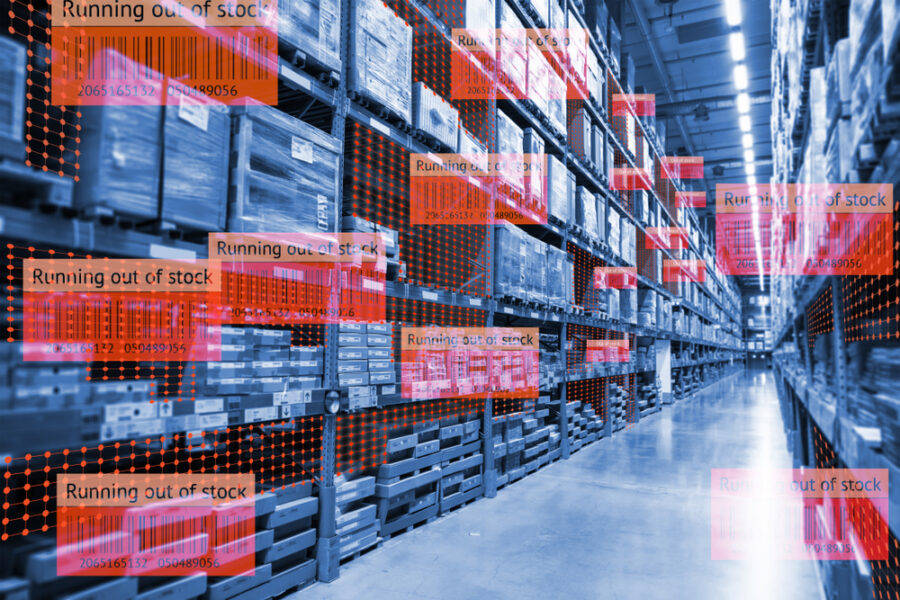Imagine a warehouse without forklifts, conveyor belts, or an inventory management system. In today’s fast-paced online retailing and shipping world, it’s not uncommon for warehouses to be on the cutting edge of technology.
Your company needs to stay on top of these trends to compete with other companies vying for your customers’ business. With all this pressure from competitors and new technologies emerging every day, how can you ensure you’re using the latest warehouse technologies?
Here are three examples that will help you stay ahead of the curve.

Automated Storage and Retrieval Systems (AS/RS)
A newer type of storage system that combines robotics and automation with traditional materials handling equipment such as forklifts and conveyors.
AS/RS is a boon to warehouse operators because it combines the speed and efficiency of automation with the flexibility and adaptability of manual materials handling equipment.
It also helps companies avoid a common mistake made in manual materials handling: pushing to maximize the productivity of a facility without regard for long-term requirements.
A good analogy is that manual labor is like a sports car, while automated storage and retrieval systems are like an 18-wheeler truck. As such, in warehouses where products are stored deep, space can be minimal because of the height limitations of forklifts.
One problem with keeping goods too high is that it encourages stacking goods above capacity. This can lead to damaging or destroying inventory if they topple over from their precarious perches.
For this reason, AS/RS sets in as an excellent solution. With this type of system, warehouse operators can easily match storage space to demand while avoiding large investments in additional warehouse space. Best of all, AS/RS devices are easy to program, move, and configure. This means you can adapt your workflow as needed.
Enterprise Resource Planning (ERP)
ERP is an integrated computer system that manages all business operations, including manufacturing and distribution processes and inventory control. It is used by manufacturers, wholesalers, and retailers to coordinate all of their business operations.
ERP may sound like something out of a sci-fi movie, but it’s not as complicated or expensive as you might think. A good tip for warehouse managers who are considering implementing an ERP system is to start small.
Pick one area of your business that could use improvements, such as purchasing or inventory control, and implement just the features to address that need.
An ideal way to stay ahead of warehouse ERPs is through NetSuite implementation. It involves an all-inclusive web application that can be customized to meet the exact needs of your business, minimizing potential technological problems.
Even better, you’ll never have to worry about having an out-of-date ERP system again because NetSuite is constantly evolving with emerging technologies.
Wearable Technology
A wearable is an electronic device or appliance that can be worn by a person. Its purpose is to perform some unique function, such as tracking the number of steps someone takes in a day.
This data can then be used for things like monitoring employee health and fitness levels. Some warehouse jobs are highly physical, such as unloading trucks. As such, this type of technology could pay dividends by reducing injuries and worker’s compensation claims.
Companies can also use wearables to provide real-time information about products. For example, if your workers are having trouble finding out where certain items are stored on the warehouse’s shelves, you can put Radio Frequency Identification (RFID) tags on them.
RFIDs are essential to provide them with instant updates about their location through Bluetooth devices or smartphone applications.
Warehouse managers can use both types of wearables by using the data they provide to optimize their workflow. For example, if you notice that many products are damaged by forklifts during unloading, a practical solution would be to install RFID tags on the items and then install readers at strategic points throughout your warehouse.
This way, you can track product damage for each truckload as it enters your facility, allowing you to implement new safety precautions quickly rather than after the fact. Additionally, through these precautions, you can reduce the number of pay-outs for damaged inventory, which will save your business money.
Conclusion
Warehousing and distribution are profitable businesses. However, the management team needs to stay committed to innovative thinking and constant improvement. By integrating the technologies mentioned above in warehouses, companies can take their storage facilities to the next level.










Comments